In the face of natural disasters and crises, where lives can change in a matter of minutes, the quest for lifesaving information draws nearly every American to their local, trusted public television or radio stations.
Many may not know that public media stations are the backbone of the Emergency Alert System (EAS) and Wireless Emergency Alerts (WEA) system, connecting residents with national and geotargeted information about dangerous weather, missing children, and other critical situations, and providing a link between local, state and federal officials with the public. In the case of a WEA communication delivery failure, public television stations serve as the essential backup system. Now, a new Federal Emergency Management Agency (FEMA) grant program, the Next Generation Warning System (NGWS), is strengthening Americans’ access to lifesaving emergency information across all 50 states and U.S. territories.
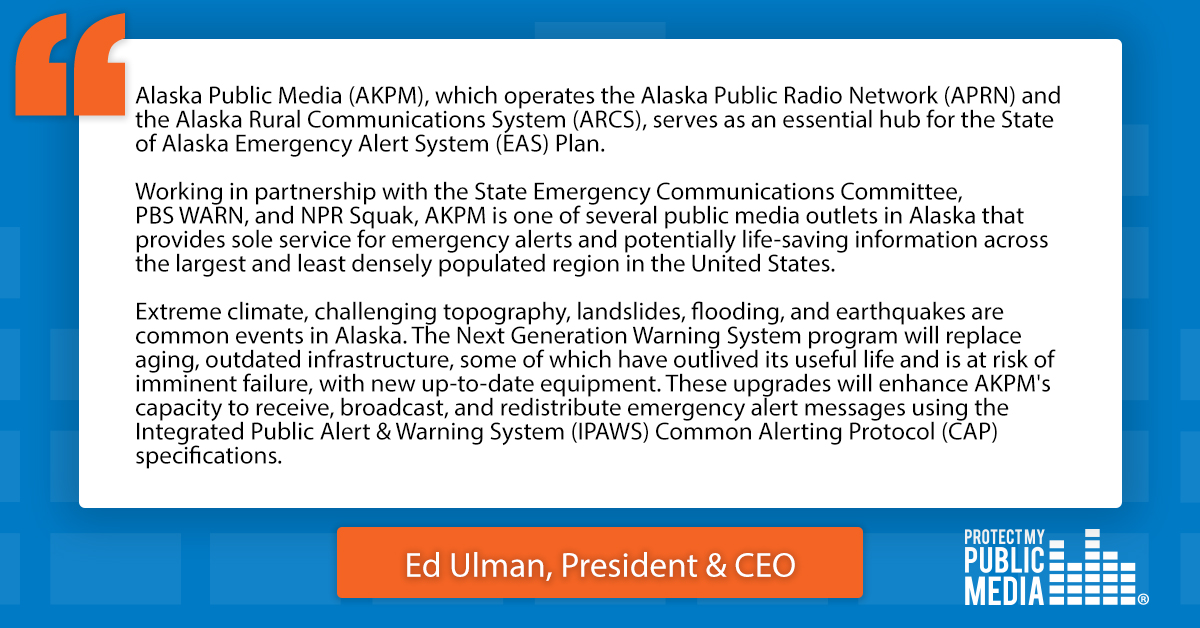
How NGWS Works
FEMA selected the Corporation of Public Broadcasting (CPB) to establish and administer the NGWS competitive grant program. Each year, CPB awards funding to stations that require infrastructure replacements and upgrades to expand local alert, warning, and interoperable communications, enabling a more resilient and secure public alerting system.
NGWS funding is designated for public media stations because it’s the only system that reaches almost every American household. It’s also the most reliable system to distribute national, state, and local emergency alerts and warnings to residents, even if the power grid goes down.
The First NGWS Grant Recipients
On October 16, 2023, CPB unveiled the first NGWS grantees, Mississippi Public Broadcasting (MPB) in Jackson, Mississippi, and Indian River State College (IRSC) in Fort Pierce, Florida. MPB, a statewide network of eight public television and eight public radio stations will use this funding to expand the capacity and geotargeting of emergency alerts throughout the state, providing local communities with detailed and specific information during emergencies. IRSC, operating three public radio stations, will utilize the funds to purchase and install an HD transmission line and antenna, extending their reach to an underserved audience.
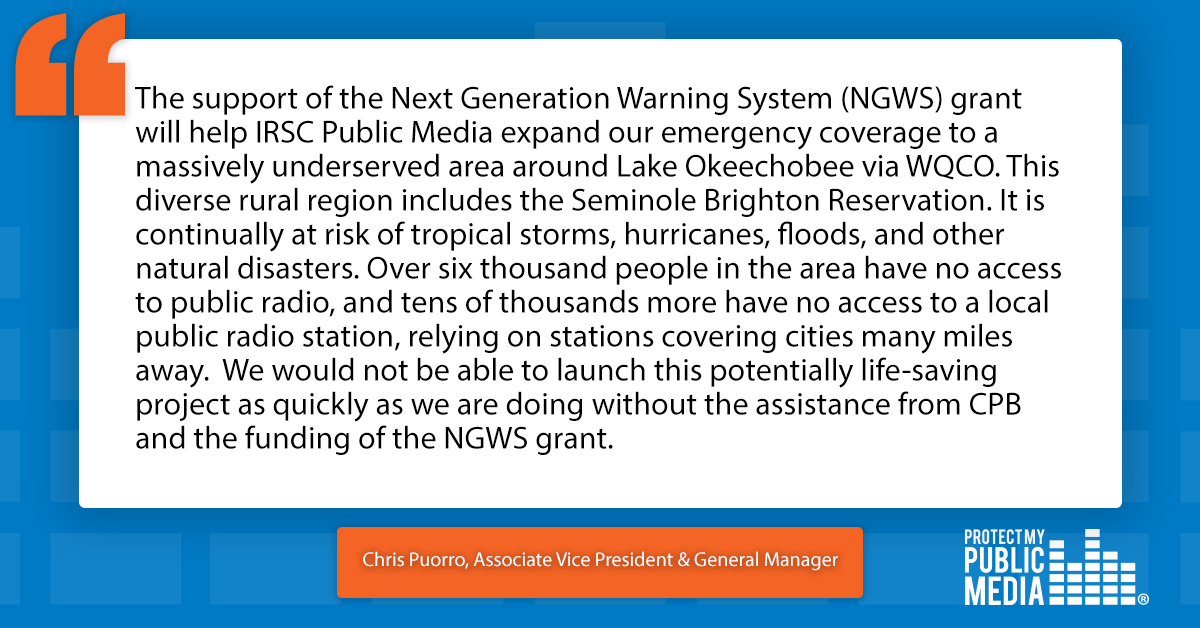
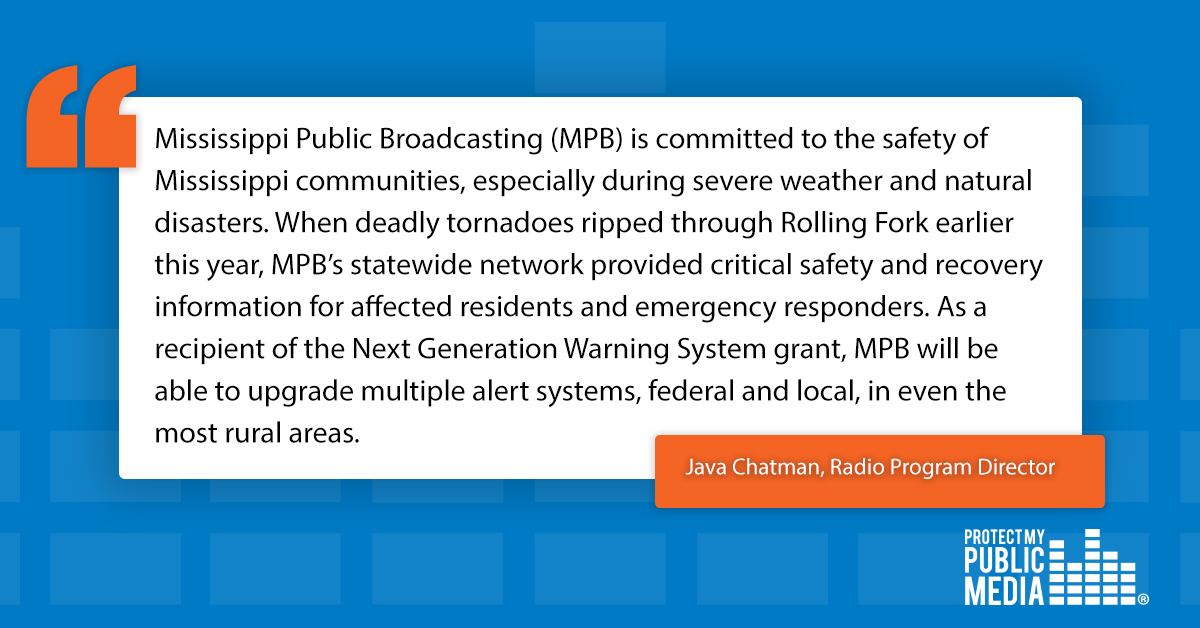
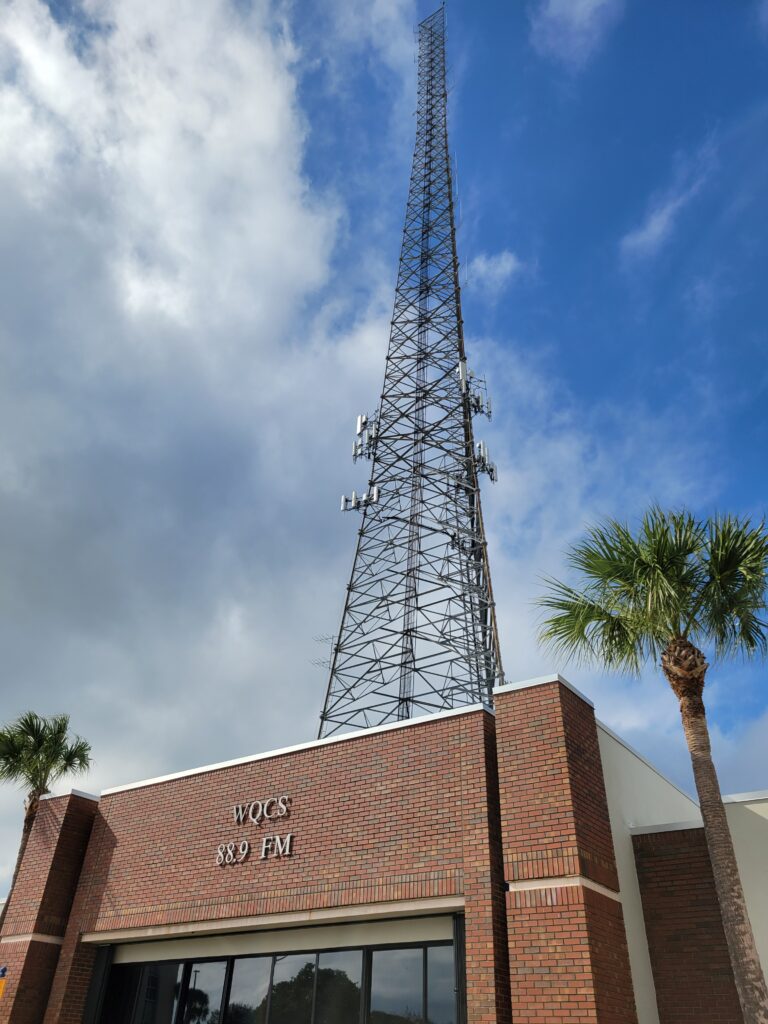
Photo Credit: Chris Puorro, IRSC Public Media
Why Investing in Public Media Stations’ Public Safety Infrastructure is Essential
Public media’s emergency alerting systems provide a comprehensive, multi-layered approach to ensure that all Americans can receive alerts and information during crises and natural disasters. From traditional broadcast alerts on television and radio, to text alerts, and metadata that scrolls across a smart screen, these systems play a vital role in alerting affected residents, especially those without broadband access. During an emergency, broadcasting is an essential medium to reach Americans, and battery-powered radios or radios in cars are important lifelines in the event of a power failure.
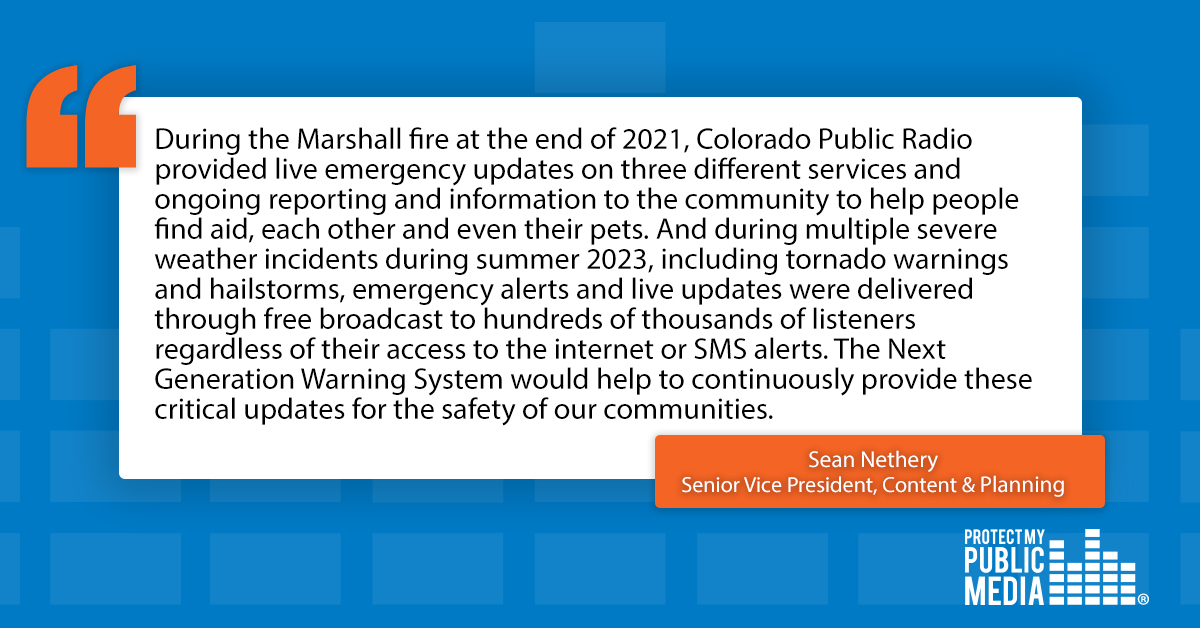
The NGWS grants are instrumental in ensuring the seamless operation of public media stations’ emergency alerts and warnings, particularly stations serving rural and remote areas. These stations are often the only local source of emergency information. It’s crucial that their infrastructure is well-maintained to reach communities underserved by other local media.
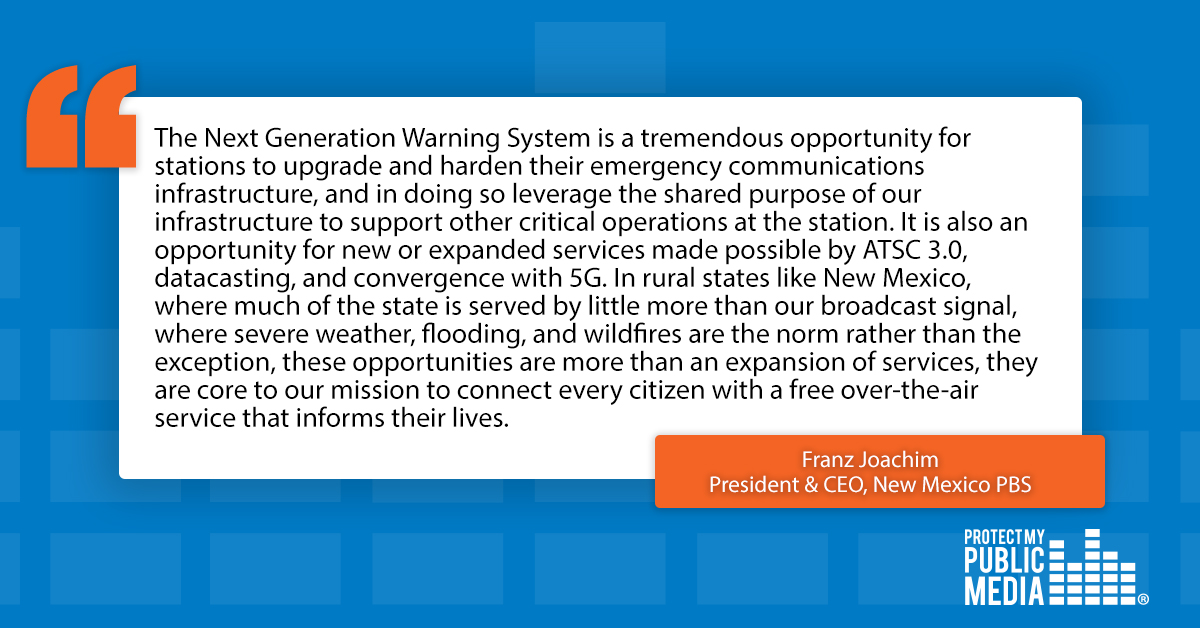
The Turning Point for Strengthening Public Media’s Public Safety Infrastructure
For nearly ten years, upgrading public media stations’ technology was a significant challenge. During that time, federal funding through CPB was frozen. Stations had no access to additional funds to support investments in capital-intensive infrastructure or equipment upgrades, or address system failures. The turning point came in Fiscal Year (FY) 2022 when Congress recognized the unmatched value of public media’s emergency alerting role and the importance of ensuring local stations’ equipment and infrastructure was reliable during emergencies. Subsequently, FEMA awarded CPB appropriated funds in FY 2022 and FY 2023 to be distributed to local stations across the country to expand their alerts, warnings, and interoperable communications, with prioritization to expanding service to rural and Native communities that are often underserved by other local media sources.
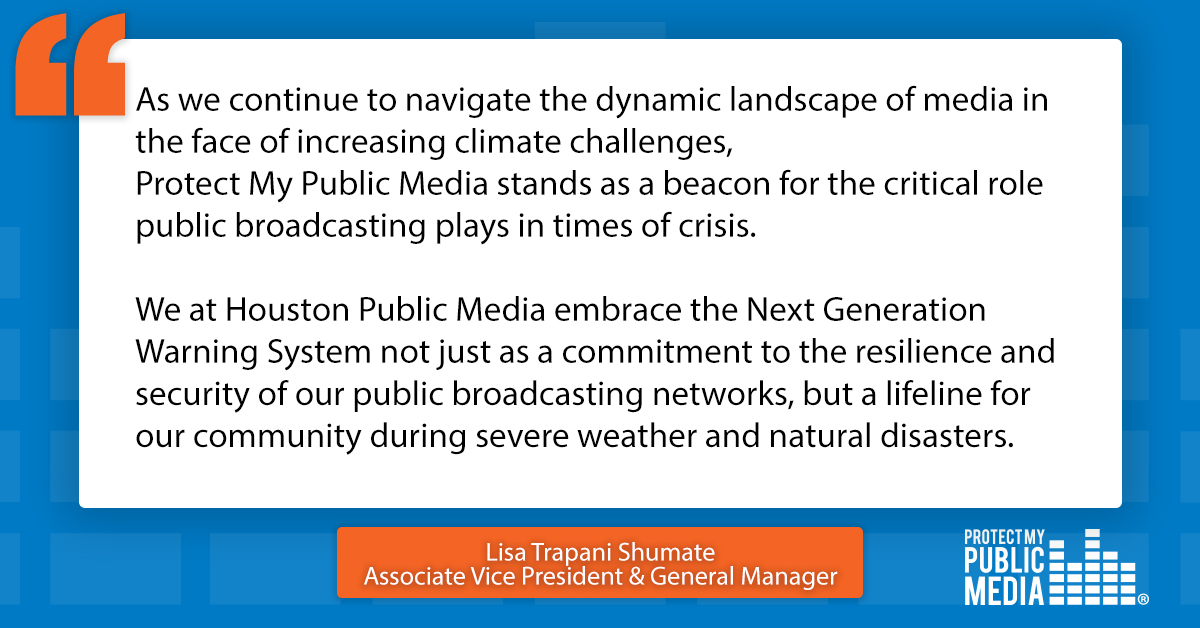
The establishment of NGWS marks a critical measure toward ensuring that local public media stations receive the funding they need to make crucial upgrades to outdated equipment that expands accessibility to alerts, integrates emerging technology, and ultimately improves emergency communications service to the American public. As these grants empower stations to build reliable equipment and infrastructure, American access to emergency alerts promises to be more inclusive, responsive, and more resilient than ever before.
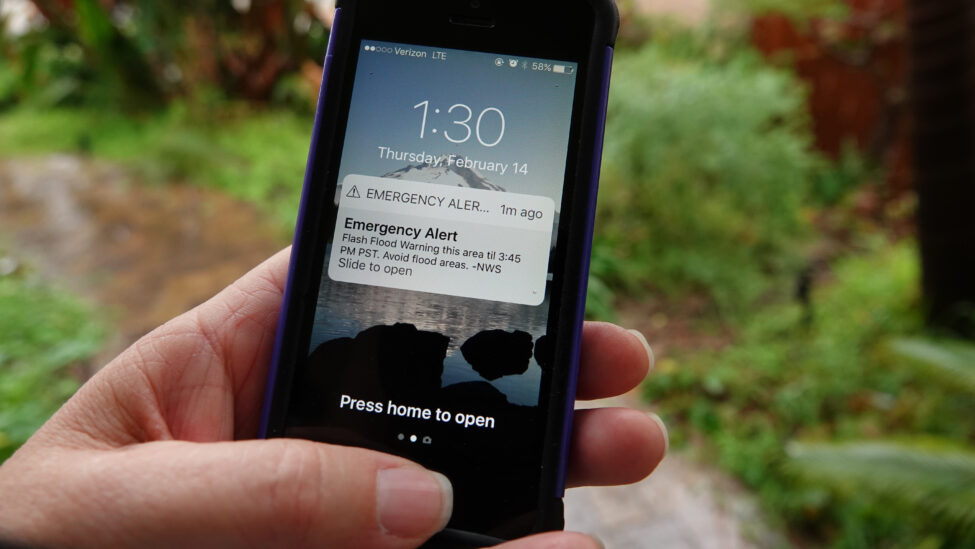
Follow Us